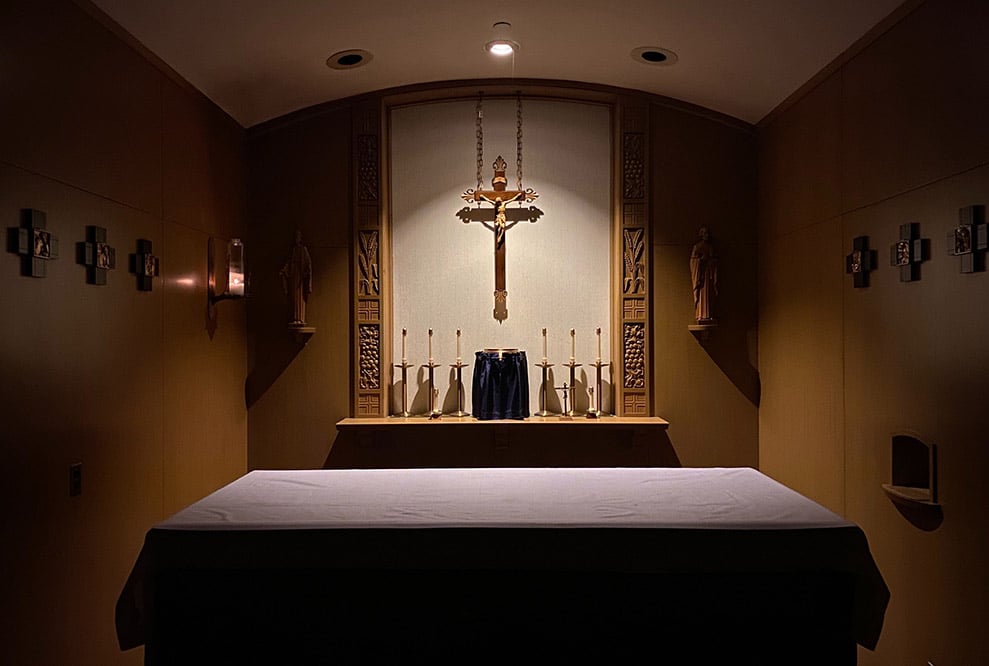 Question: My wife and I have been watching Mass from various locations on the internet, including Canada, and this is where my question arises. The Canadians seem to be using a different translation of the Bible, and it is confusing when we are trying to follow along in our missal. Can you explain?
Question: My wife and I have been watching Mass from various locations on the internet, including Canada, and this is where my question arises. The Canadians seem to be using a different translation of the Bible, and it is confusing when we are trying to follow along in our missal. Can you explain?
— Deacon George Mais, via email
Answer: The dioceses of Canada use the New Revised Standard Version, Catholic Edition (NRSVCE) for their Lectionary. In the United States we use the New American Bible Revised Edition (NABRE). In both cases, certain minor changes were made for the liturgical texts from both sources, but essentially these are the root texts for the lectionaries in both countries. Local bishops’ conferences are free to make use of different translations, and the Canadians chose the NRSVCE, which explains why the English text is different from what you are used to hearing here in the United States.
There was pressure for the U.S. bishops to adopt the NRSVCE by those who preferred “inclusive language,” which replaces words like “man” or references to God as “he,” “him” and so forth with gender-neutral words such as “they” or “all” and references to God by simply repeating “God” and not using the pronouns. But, in the end, they opted for the NABRE because it was less beset with inclusive language substitutions. The Canadian bishops, however, opted for the more inclusive but, I would argue, less accurate NRSVCE.
There are, potentially, theological problems with the approach of the NRSVCE. For example, many of the psalms that say things like “Blessed is the man who fears the Lord …” are references to the Messiah, to Christ, not just to any person. In the Old Testament, many messianic references are easily lost when inclusive language is used. This is not the case with every psalm or verse of the Old Testament, but simply swapping out pronouns and masculine references to God or to the “man” who fears the Lord in an indiscriminate fashion loses important references to Christ.
Further, while some seek to limit masculine pronouns for God — for example, he, him, his, father, son and so forth — here, too, an important theological teaching is lost. There is a sacramental and marital relationship between God and creation and God and the Church. The Church is bride and mother and is acted upon and receives from her spouse, Jesus, all that which makes her mother. The baptismal font is the womb of the Church, and we are the result of the chaste union of Christ and his bride. All creation, too, is said to be feminine in relation to God, who is father and the source of all being and existence. Creation is acted upon and receives from he who is father and creator in order to be fruitful. Hence masculine pronouns and masculine references to God are not merely antiquated notions of a misogynist past. God reveals himself as father and not mother to emphasize that he is the true origin of all we are and that we are acted upon, and to receive from him all that makes us fruitful. All of this is important to the incarnational aspects of our holy Catholic faith. God speaks and acts through bodily realities and marital imagery of male and female. “Inclusive” translations leave a lot of this on the cutting room floor.
Thus while the Canadian Lectionary is not wholly tainted, it is influenced by things that are in need of corrections. For this reason, the liturgical texts do make some alterations of the NRSVCE when used at Mass. This is also true to a lesser degree in the NABRE here in America. For example, the NABRE has the Angel Gabriel call Mary “highly favored,” whereas the Lectionary renders it more traditionally as “full of grace.”
No translation is perfect, but indiscriminate use of “inclusive” language introduces many challenges and problems. Accuracy is most commonly to be preferred readability and those things which please merely modern notions.
Sign of peace
Question: Now that we have reopened, it is strange to me that the priest tells us to exchange some sign of peace just before Communion. Isn’t this forbidden?
— Name, location withheld
Answer: It is generally discouraged, as we reopen, holding hands at Mass and other such things that might help spread infection, such as Communion under both kinds. Perhaps the celebrant made a mistake by saying a routine thing. Or perhaps he means that we should just look to those around us with some gesture of kindness.
Msgr. Charles Pope is the pastor of Holy Comforter-St. Cyprian in Washington, D.C., and writes for the Archdiocese of Washington, D.C. at blog.adw.org. Send questions to msgrpope@osv.com.





